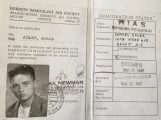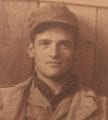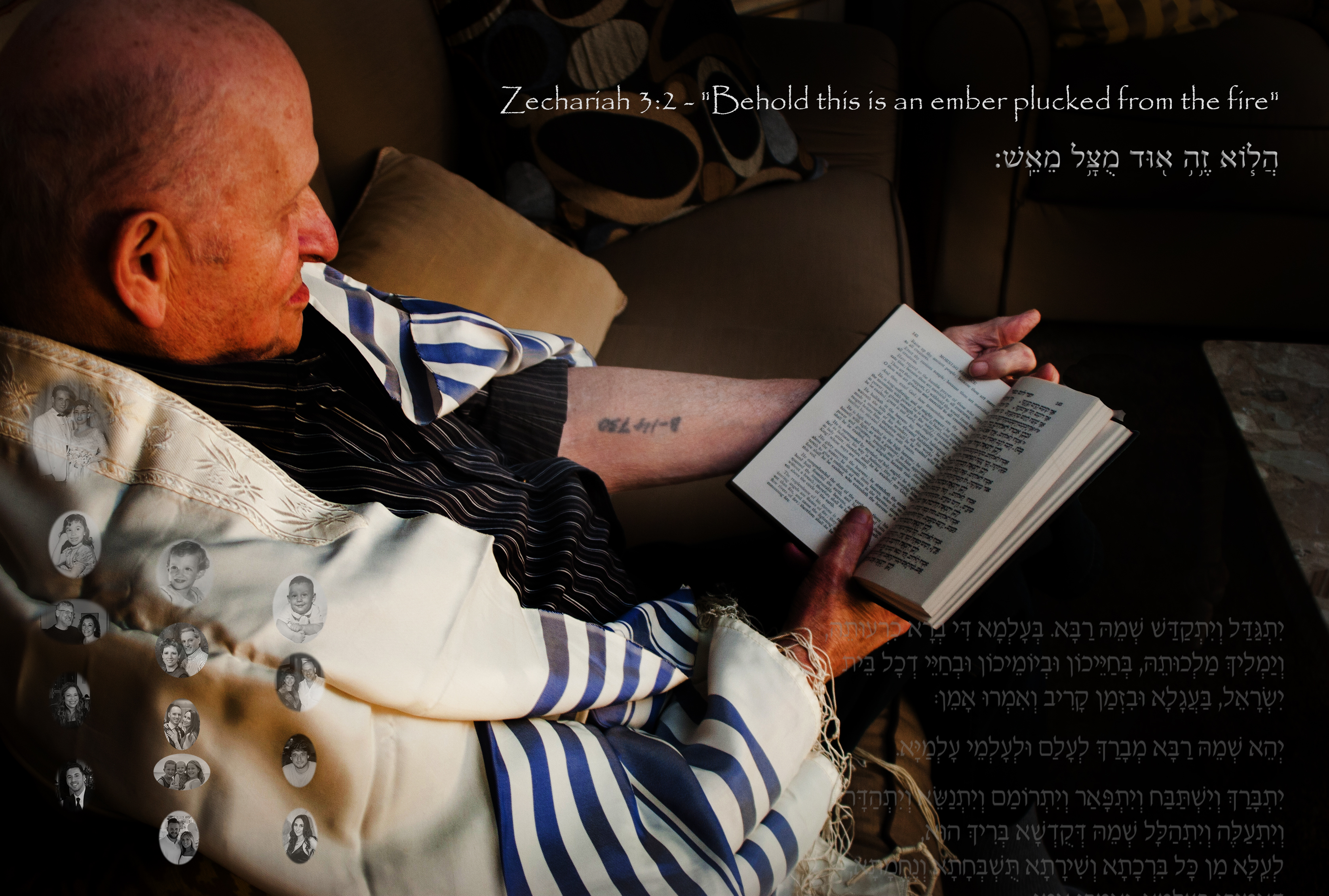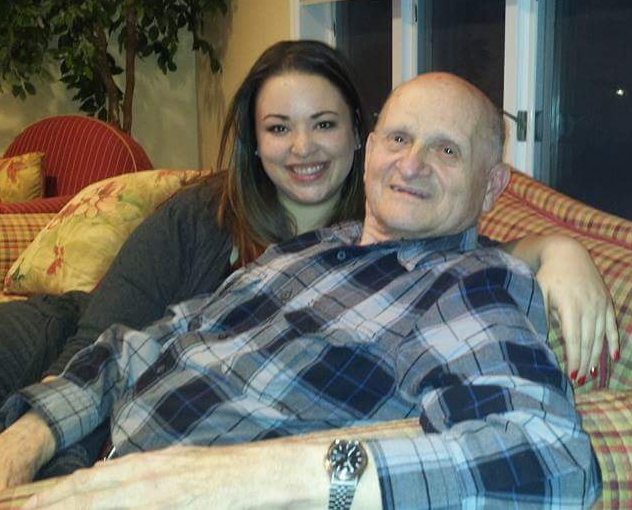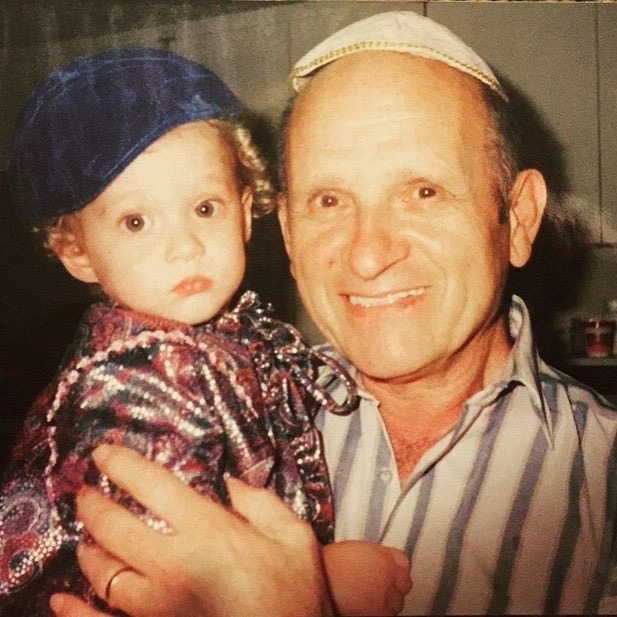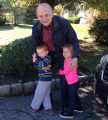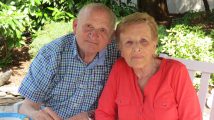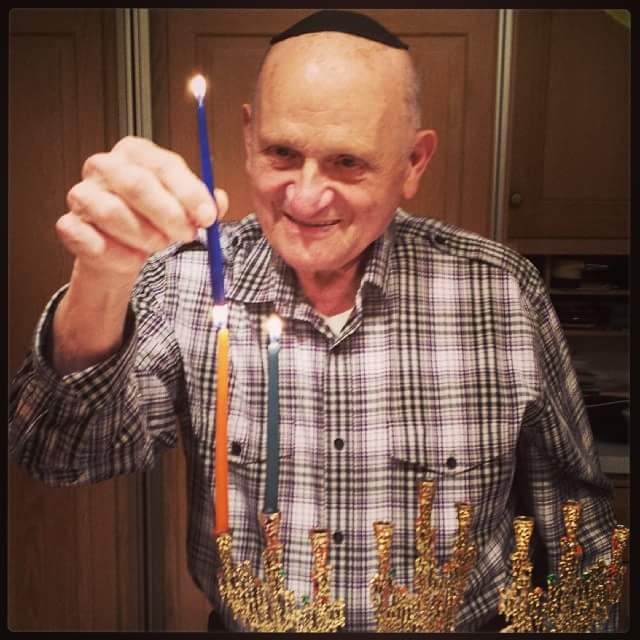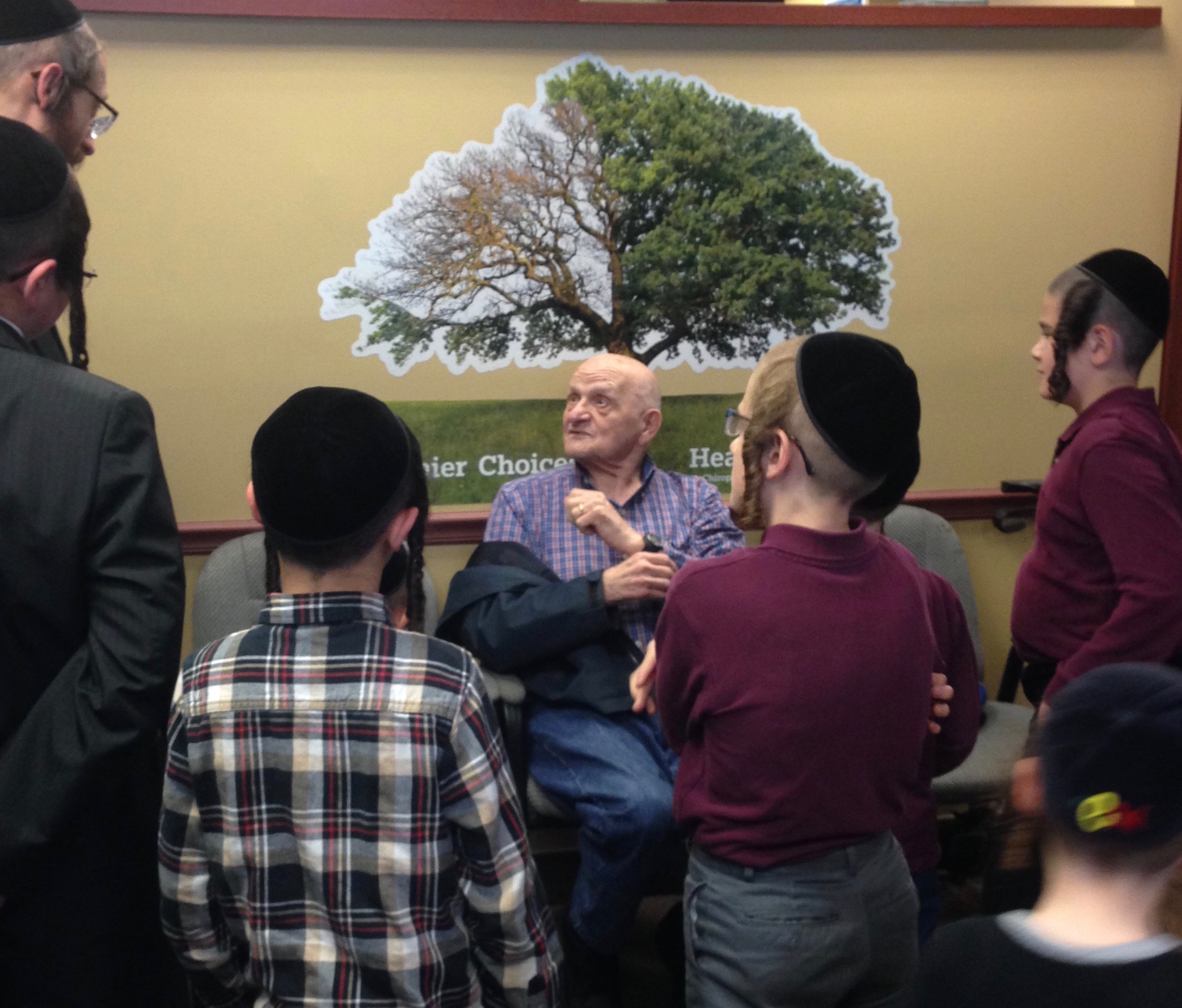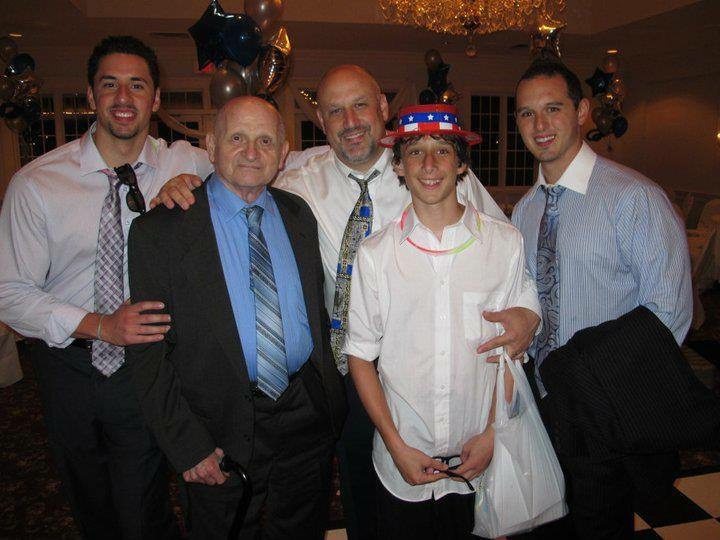- Local Survivor registry
- ANTON ADLER
- Local Survivor registry
- ANTON ADLER
Survivor Profile
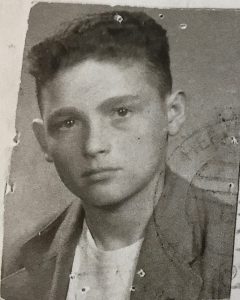
ANTON
ADLER
(1930-2017)
PRE-WAR NAME:
ANTON ADLER
ANTON ADLER
PLACE OF BIRTH:
OPSHA, CZECH REPUBLIC
OPSHA, CZECH REPUBLIC
DATE OF BIRTH:
MARCH 5, 1930
MARCH 5, 1930
LOCATION(s) BEFORE THE WAR:
OPSHA, CZECH REPUBLIC
OPSHA, CZECH REPUBLIC
LOCATION(s) DURING THE WAR:
BIRKENAU, AUSCHWITZ, MILCH
BIRKENAU, AUSCHWITZ, MILCH
STATUS:
SURVIVOR, REFUGEE
SURVIVOR, REFUGEE
RELATED PERSON(S):
RENEE ADLER - Spouse,
RIZA VEGH ADLER - Mother (Deceased),
DAVID ISRAEL ADLER - Father (Deceased),
RISA LEFKOWITZ - Daughter,
BRENDA LANDI - Daughter,
DAVID NEIL ADLER - Son,
ALY BETH LEFKOWITZ - Granddaughter,
JORDAN LEE LEFKOWITZ - Grandson,
ERIC JOSEPH LANDI - Grandson,
JILLIAN LEIGH LANDI - Granddaughter,
JOSHUA REID ADLER - Grandson,
AMANDA KELSEY ADLER - Granddaughter,
JACOB HENRY - Great - Grandson,
EMMA ISABEL L - Great - Granddaughter,
AVA Eliana -Great - Granddaughter,
MENDEL ADLER -BROTHER (Deceased)
-
brief BIOGRAPHY BY NANCY GORRELL
Anton was born in Opsha, the Czech Republic on March 5, 1930. His entire paternal and maternal family lived in the vicinity of Opsha. His family was very religious. His mother, Riza wore a kerchief over her head. According to Alyson Lefkowitz in her interview, Anton’s father, David, left Opsha with his brothers for America with the hopes of sending for his family. The family was notified shortly afterwards that he was killed by the Nazis. Anton, his mother, his two brothers, his sister and grandparents all were sent to the ghetto. He never saw his father again. This was to haunt Anton for the rest of his life. He named his first daughter, Risa, after his mother, and his second daughter, Brenda, after his sister, Brauna.
In 1942 when he was 12, Anton and his family were deported to Birkenau. They were separated into two lines. Only Anton and his 17 year-old brother, Mendel, were selected for work. All the others perished. Anton’s tattoo was B-14730. Brenda Landi, his daughter, remarked in a phone conversation how the tatoo was visibly shrunken in Anton’s last days—a painful reminder to reflect upon. In Birkenau Mendel was starving and gravely ill. He had been stealing food and giving it to his brother, Anton. Mendel died giving his food to his brother.
At the time of liberation, Anton was on a death march from camp to camp. He was liberated in late 1945. As a young teenager, he was in a displaced persons camp. Eventually, one of the uncles who made it to America located him through HIAS. Anton embarked on the SS Marine Flasher on September 22, 1947 from Bremen bound for Samuel Adler’s residence in Bronxville, New York. His uncle owned a dairy company, and Anton worked for his uncle for a time. Then he joined the United States Army, and he was stationed in Korea He did not have to do combat because of his survivor status. (Refer to Related Media for Anton in his US Army uniform). Upon his return from service, he lived in New York City with a cousin, and he worked for a high end watch company which became a life-long passion. At the time, he met his future wife, Renee Benchetrit, working in the fashion district. They married on May 20, 1953. Three children followed: Risa born in February 1957; Brenda born in May 1959; and David Neil Adler, born April 3, 1966. Anton was in the dairy and beverage industry most of his working life.
Renee Adler is blessed with six grandchildren and three great-grandchildren. Anton’s grandson Eric Landi married Holly October 2018, and Jill Landi married Scott Davis August 2018.
Editor’s Notes
Refer to Related Media for photo of Anton in U.S. Army uniform.
Refer to Related Media for the Holocaust Photographic Collage of Anton Adler created by his son, David Neil Adler on the occasion of his mother, Renee’s, 90th birthday.
Refer to David Neil Adler’s Holocaust Photographic Collage Artist’s Statement in the Voices of the Descendants.
Refer to granddaughter, Aly Beth Lefkowitz, in Voices of the Descendants.
Refer to Historical Notes below for Czech Republic 1938
-
SURVIVOR INTERVIEW with aly beth lefkowitz
ANTON ADLER INTERVIEW WITH ALY BETH LEFKOWITZ, GRANDDAUGTHER
Location: Aly Lefkowitz Residence (phone conference)
Date: October 18, 2017
Interviewer: Nancy Gorrell
Q: Describe your grandfather’s family background.
My grandfather was born in Opsha, Czechoslavkia, the families’ hometown. His mother’s sister lived nearby. His mother was very religious; she wore a kerchief over her head. His father disappeared at the time they all were sent to the ghetto. His mother tried to shelter him. He never knew where his father went, whether he abandoned them or whether he was killed.Q: Did he ever see his father again?
No. He never saw his father again, and this haunted him. His father’s name was unknown to me and his mother’s name was Riza. He named his first daughter Risa after his mother. His second daughter, he named Brenda, after his sister Brenna.Q: Did your grandfather have any siblings?
He had an older brother, Mendel Yosef, a younger brother, Yakov, and a younger sister, Brauna. He came from a very poor family and a religious family.Q: Were they deported from the ghetto?
The tattoo on his arm was B14730. The “B” indicates camp Birkenau. He was also in Auschwitz and Milch too. He was 12 when he was deported to the first camp in 1942.Q: Did he talk to you about his camp experiences?
Yes. When he got to the first camp he was with his mother, sisters, brother, aunt and his grandmother, and they were immediately separated into two lines. His brother who was 17 was put into another line. And his grandmother told him to sneak over to his brother. All the others were killed and only he and his brother survived. The work he did was in a kitchen and he used to steal scraps of food and bring them back to the barracks. He had strings around his thighs and he would tie scraps of food to them and risk his life to bring them back to the barracks. For a long time his brother would give him his rations. His brother focused on keeping him alive. Mendel Yosef was starving and got ill and died two months before the war ended in the bed next to his brother in the barracks.Q: Did he say anything more about being in the barracks?
He talked a lot about how no one talked to other people in the barracks because you were too tired. Every morning people would be dead in the barracks around him.Q: When did your grandfather begin talking about his Holocaust experiences?
My grandfather didn’t talk to anybody most of his life. The first person he talked to was my stepfather at break-the-fast during Yom Kippur. I was probably 13. It was in 1996 and he was 66 at the time. He was still very particular who he spoke to. He didn’t talk much. Everyone knew how traumatized he was.Q: How did you get him to talk with you about the Holocaust?
I was the one always curious. I started talking to him when I was 12 or 13 when I was alone with him. The scary part was how to open up the subject. It started when I was young, around the ages of seven. My cousin and I were watching an Arnold Schwarzenegger movie, and he walked into the room. He started sweating; he walked out; he couldn’t watch it; I was so touched and hurt by it I wanted to help him in some way.Q: What happened during liberation?
When the camps were being evacuated, the Nazis stirred everyone up and made them run from one camp to another. They made them run without shoes, and they shot those dead who wouldn’t run. He was one of 20 that made it to the next camp. That’s how he got to the last camp. He was liberated in late1945.Q: Where did he go after liberation?
For the next year he was homeless. He had no one but an uncle in America. A little over a year, he would take trains all over Europe; he would eat for free. They would give you food and shelter if they saw you came from the camps. He lived on trains and on the streets.Q: How did he emigrate from Europe?
According to his immigration document (Note: refer to document in Related Materials), he was sponsored by HIAS, headquartered in Munich and embarked on the SS Marine Flasher on September 22, 1947 from Bremen bound for Samuel Adler on Webb Ave, in the Bronx, New York. His uncle, Samuel owned Dell Farms, a dairy company, and he lived in the Bronx in a huge mansion. He was wealthy, but he wasn’t too kind to my grandfather. He did vouch for my grandfather and take him in, but it was a rough time for him, working in the dairy farms.Q: What was post-war life like for him in the Bronx, New York?
When he was able, he left and joined the United States Army. He was stationed in Korea. He was a very gentle person, and I never fathomed how he could go to war. He was a mechanic, and he worked on tanks and war vehicles. If you had the concentration camp tattoos, they didn’t put you in combat. That wasn’t a law. My grandfather said that the second they saw the number on his arm, the commander said you are not fighting.Q: What did he do after the Korean War?
He came back after the war. He worked for a high-end watch company. It actually became a lifelong passion. He shared an apartment in New York City with his cousin, Sam Katz, and that’s how he met my grandmother, Renee Benchetrit. She was working in the fashion district in Manhattan. She came over from Morocco and taught herself English. She was a dressmaker and designer. They married in the mid-1950s and my mother, Risa was born in February of 1957, followed by Brenda in May 1959 and finally David in April 1966. In 1969 their family moved to Rockland County, NY.Q: Did he have any education?
Little to none. He learned the watch business, then worked for the family dairy farm, and that trained him for his life’s career. He was in the dairy industry and beverage industry all his working life.Editor’s Note:
Refer to Alyson’s Eulogy to her Grandfather in Voices of the Descendants
-
HISTORICAL NOTES:
CZECH REPUBLIC 1938
According to the 1930 census, 356,830 persons in the Czechoslovak Republic identified themselves as Jews by religion: 117,551 in Bohemia and Moravia, 136,737 in Slovakia, and 102,542 in Subcarpathian Rus.
The partition of Czechoslovakia in 1938-1939 determined the fate of its Jews during the war. After the breakup of Czechoslovakia, approximately 118,310 persons defined as Jews lived in the Protectorate of Bohemia and Moravia. Before 1941, approximately 26,000 Jews were able to emigrate.
During the Holocaust, the Germans and their collaborators killed approximately 263,000 Jews who had resided in the territory of the Czechoslovak Republic in 1938.
-
Sources and Credits:
Credits:
SSBJCC Survivor Registry Phone Interview with Aly Lefkowitz; Interviewer: Nancy Gorrell; Digital historic and family photographs donated by the Adler and Lefkowitz families.
The SSBJCC Holocaust Memorial and Education Center gratefully acknowledges photographic artworkwork donated by David Neil Adler.


